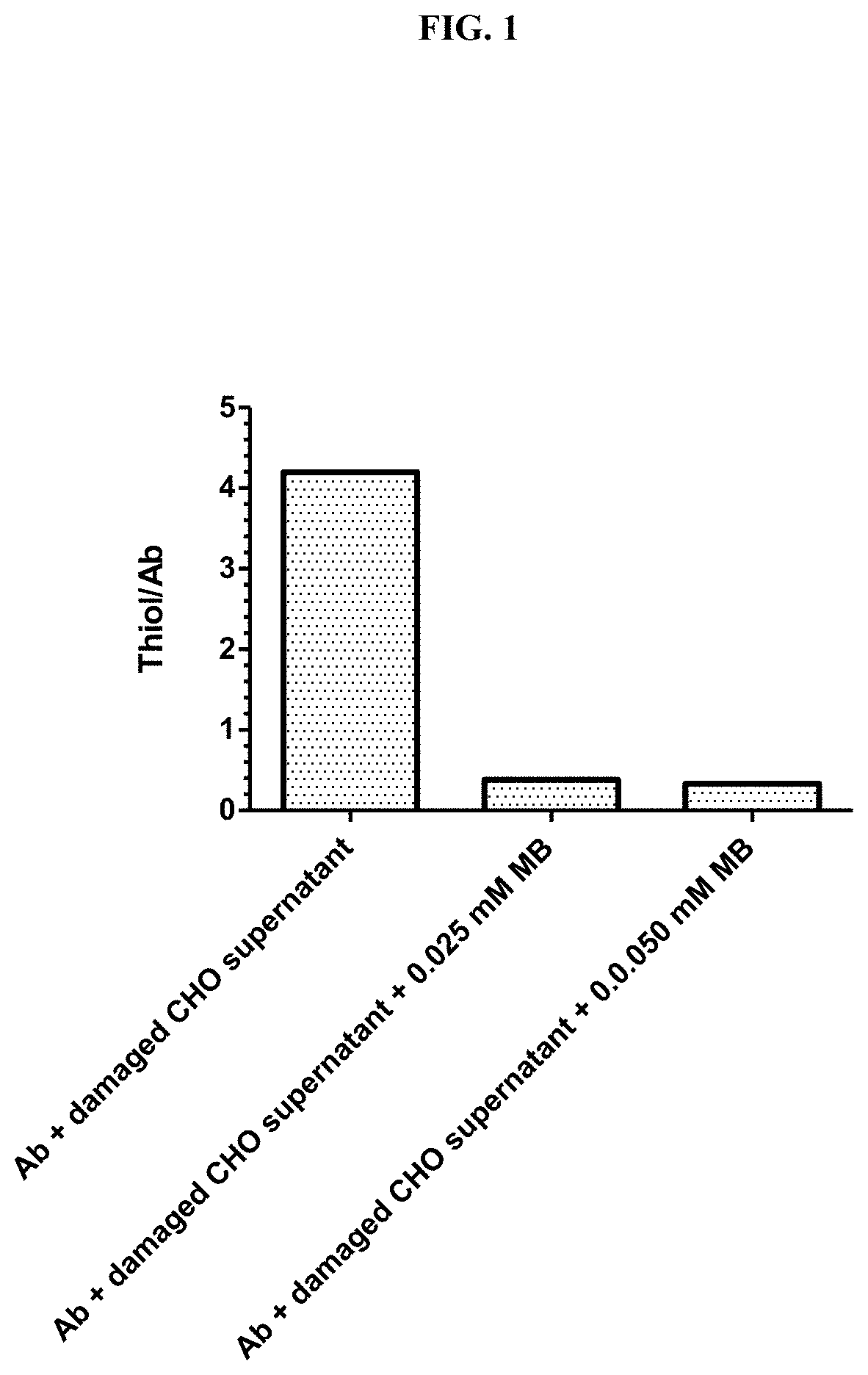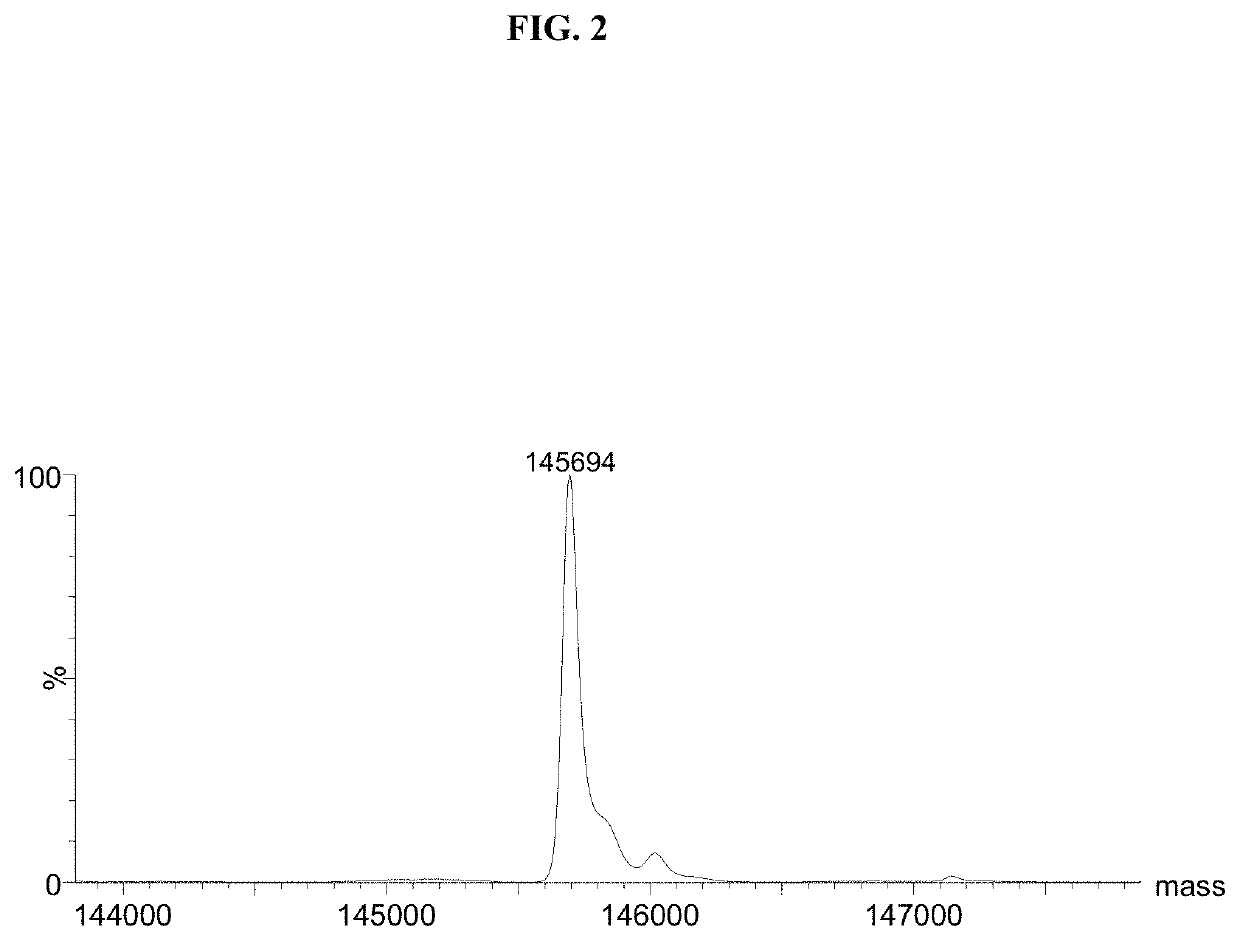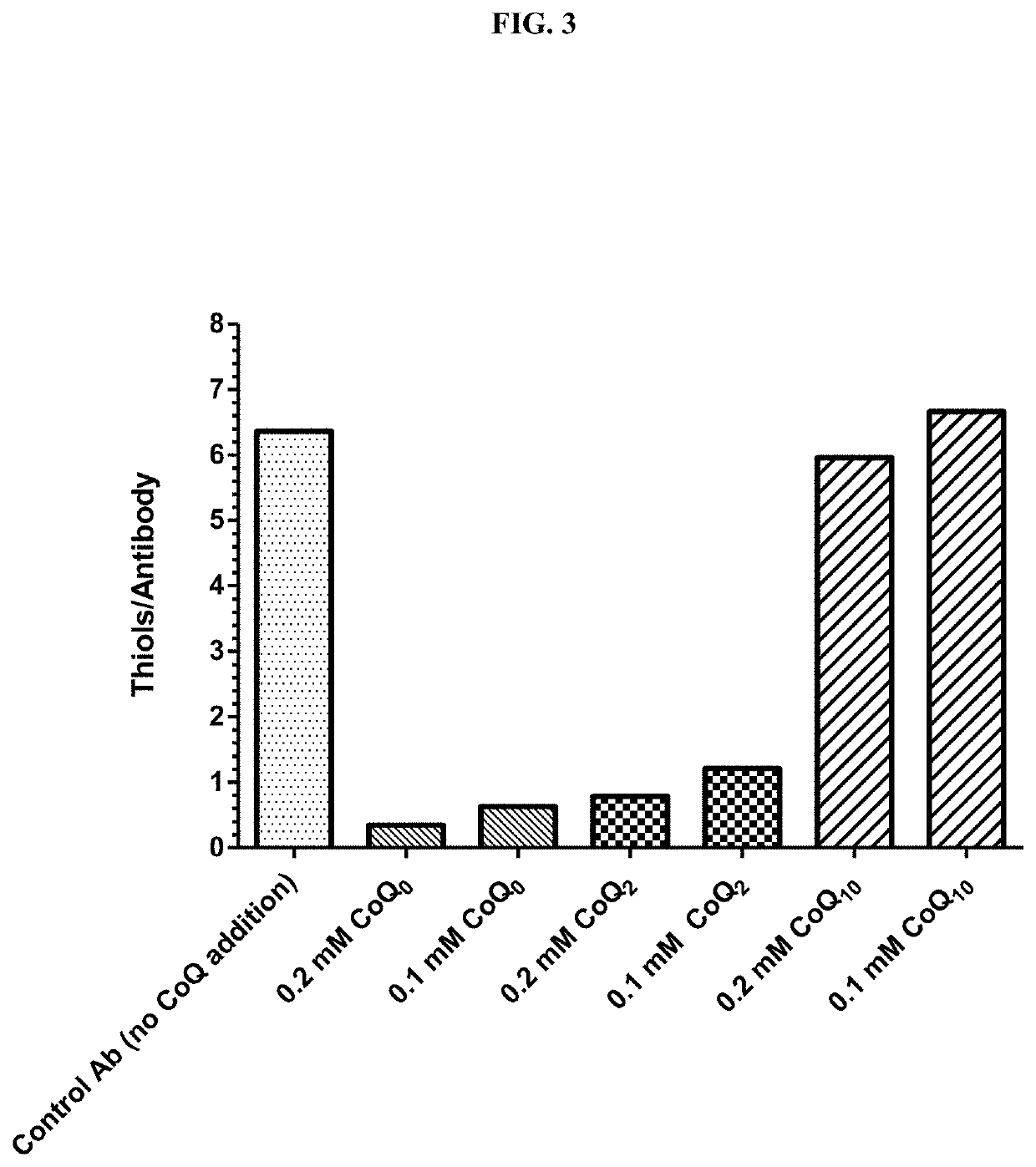Compositions and methods for antibody production
a technology of composition and method, applied in the field of composition and method for antibody production, can solve the problems of intracellular reducing protein release, antibody instability, etc., and achieve the effect of minimizing disulfide bond reduction
- Summary
- Abstract
- Description
- Claims
- Application Information
AI Technical Summary
Benefits of technology
Problems solved by technology
Method used
Image
Examples
example 1
Blue Decreased Antibody Disulfide Bond Reduction
[0224]A simulated, damaged CHO cell suspension was prepared using 300 million CHO cells per ml phosphate buffered saline (PBS), which was subjected to three freeze-thaw cycles under vacuum, followed by pelleting of cell debris by centrifugation, and storage of the supernatant at −80° C.
[0225]The concentration of thiol in the suspension of damaged CHO cells was measured as 4 mM using DTNB ((5,5′-dithiobis(2-nitrobenzoic acid); Ellman's reagent). Humanized anti-folate receptor 1 (FOLR1) IgG1 (1 mg) was immobilized on 0.05 ml of Protein A bead (RepliGen) and then treated with pre-mixed 0.5 ml PBS and 0.1 ml damaged CHO cell supernatant. The concentration of thiol in this mixture was 0.67 mM.
[0226]The sample was rotated for about 2.2 hours at ambient temperature, following which the supernatant was removed and the beads were washed with PBS four times (1.5 ml each). The thiol content of the immobilized antibody on the beads was then analyz...
example 2
Q Analogs Decreased Antibody Disulfide-Reduction
[0235]Coenzyme Q analogs were tested at different concentrations to determine whether they had a protective effect on disulfide reduction during the incubation of antibody with damaged CHO cell supernatant (FIG. 3). Humanized N901 (Anti-CD56 IgG1; 1 mg) was immobilized on 0.05 ml of Protein A bead (RepliGen) and then treated with pre-mixed 0.4 ml PBS and 0.1 ml damaged CHO cell supernatant (described in Example 1) with or without the addition of coenzyme Q analogs. The concentration of thiol in these mixtures was 0.8 mM.
[0236]The samples were rotated for about 1.5 hours at ambient temperature, following which the supernatant was removed and the beads washed with PBS three times. The thiol content of the immobilized antibody on the beads was then analyzed by the addition of 0.6 ml of mixture of PBS and 0.5 mM DTNB, rotation for about 10 minutes, centrifugation, and measurement of the absorbance of the supernatant at 412 nm. The number o...
example 3
hoquinone-4-sulfonic Acid Decreased Antibody Reduction
[0242]The effect of 1,2-naphthoquinone-4-sulfonic acid (NQS) on antibody-disulfide reduction was studied by incubating 1,2-naphthoquinone-4-sulfonic acid at several concentrations with antibody and damaged CHO lysate. The damaged CHO cell lysate was generated by the addition of 0.5 ml RIPA buffer (50 mM Tris-HCl, pH 7.4, 1% NP-40, 0.5% sodium deoxycholate, 0.1% sodium dodecylsulfate) to 100 million CHO cells. The thiol concentration in CHO cell lysate was measured by Ellman's assay as 2.1 mM.
[0243]Each sample contained pre-mixed 0.5 ml RIPA buffer (50 mM Tris-HCl, pH 7.4, 1% NP-40, 0.5% sodium deoxycholate, 0.1% sodium dodecylsulfate) with 1 mg humanized N901 antibody, with or without 1,2-naphthoquinone-4-sulfonic acid (25 micromolar, or 50 micromolar, or 100 micromolar), which was added to a cell pellet of 100 million CHO cells, and the resuspended cells were incubated at ambient temperature for 30 minutes, following which the c...
PUM
| Property | Measurement | Unit |
|---|---|---|
| molar ratio | aaaaa | aaaaa |
| molar ratio | aaaaa | aaaaa |
| molar ratio | aaaaa | aaaaa |
Abstract
Description
Claims
Application Information
 Login to View More
Login to View More - R&D
- Intellectual Property
- Life Sciences
- Materials
- Tech Scout
- Unparalleled Data Quality
- Higher Quality Content
- 60% Fewer Hallucinations
Browse by: Latest US Patents, China's latest patents, Technical Efficacy Thesaurus, Application Domain, Technology Topic, Popular Technical Reports.
© 2025 PatSnap. All rights reserved.Legal|Privacy policy|Modern Slavery Act Transparency Statement|Sitemap|About US| Contact US: help@patsnap.com



